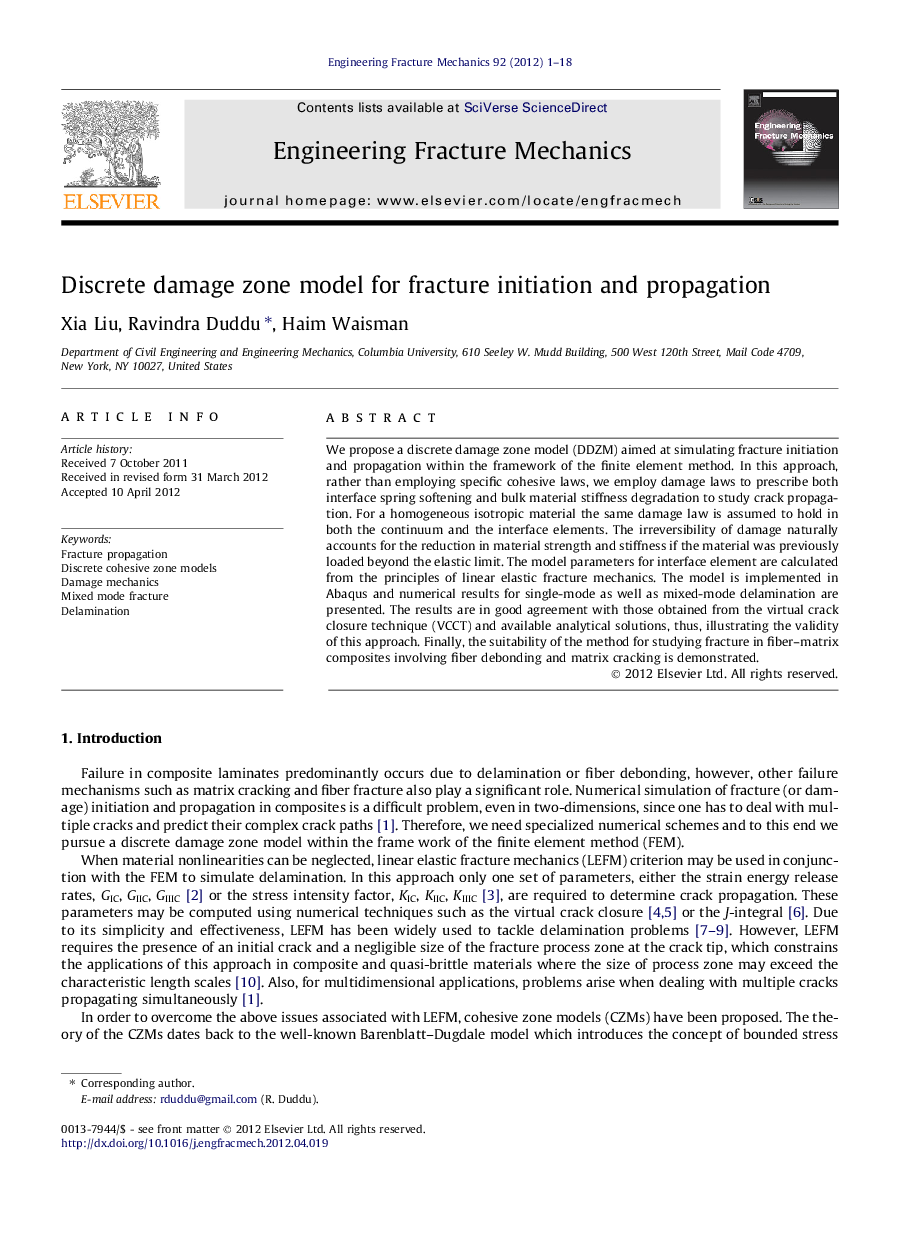| Article ID | Journal | Published Year | Pages | File Type |
|---|---|---|---|---|
| 771020 | Engineering Fracture Mechanics | 2012 | 18 Pages |
We propose a discrete damage zone model (DDZM) aimed at simulating fracture initiation and propagation within the framework of the finite element method. In this approach, rather than employing specific cohesive laws, we employ damage laws to prescribe both interface spring softening and bulk material stiffness degradation to study crack propagation. For a homogeneous isotropic material the same damage law is assumed to hold in both the continuum and the interface elements. The irreversibility of damage naturally accounts for the reduction in material strength and stiffness if the material was previously loaded beyond the elastic limit. The model parameters for interface element are calculated from the principles of linear elastic fracture mechanics. The model is implemented in Abaqus and numerical results for single-mode as well as mixed-mode delamination are presented. The results are in good agreement with those obtained from the virtual crack closure technique (VCCT) and available analytical solutions, thus, illustrating the validity of this approach. Finally, the suitability of the method for studying fracture in fiber–matrix composites involving fiber debonding and matrix cracking is demonstrated.
► A novel approach based on damage mechanics is proposed for mixed-mode fracture. ► Damage is considered both at the crack interface and in the surrounding continuum. ► The damage model basically defines the cohesive interactions at the crack interface. ► The irreversibility of damage accounts for the permanent loss in material strength. ► A length scale ls is introduced that leads to a mesh size independent formulation.
